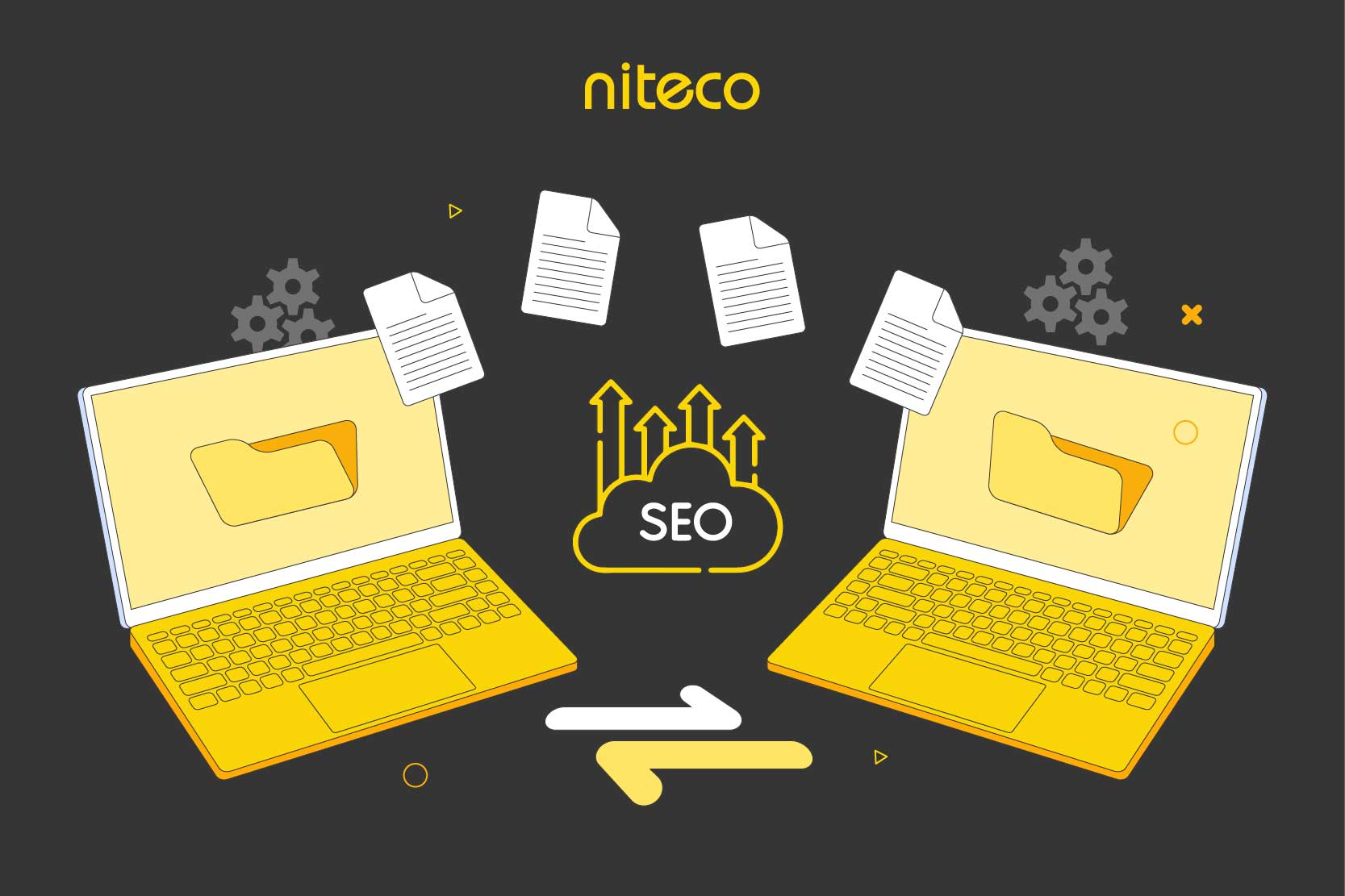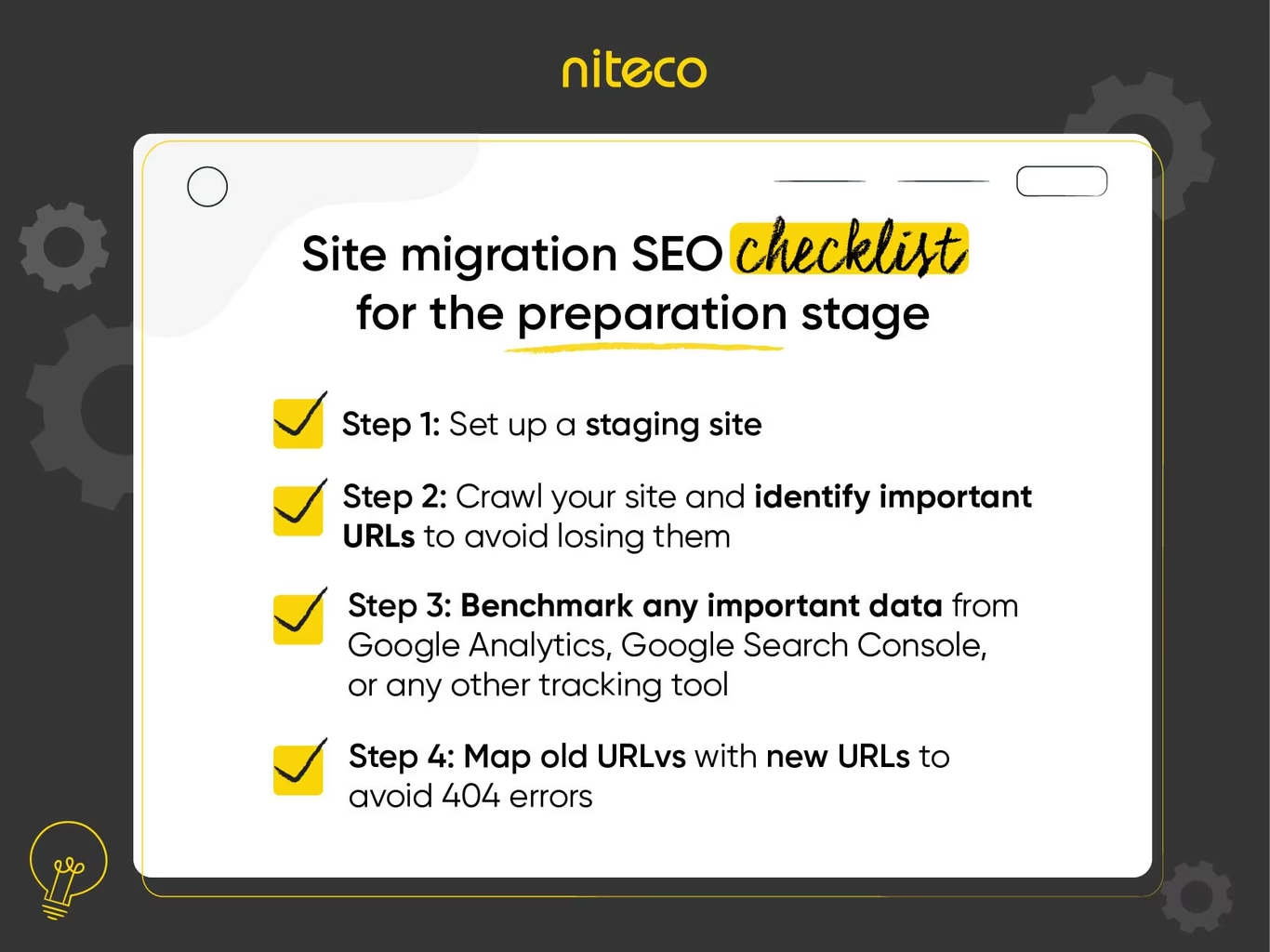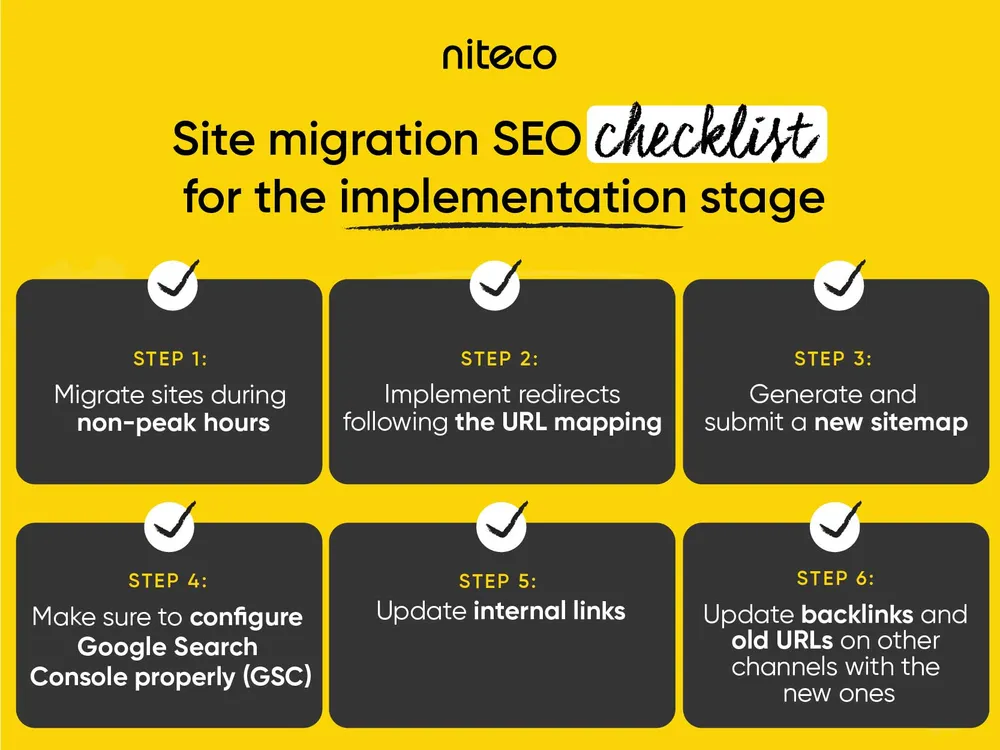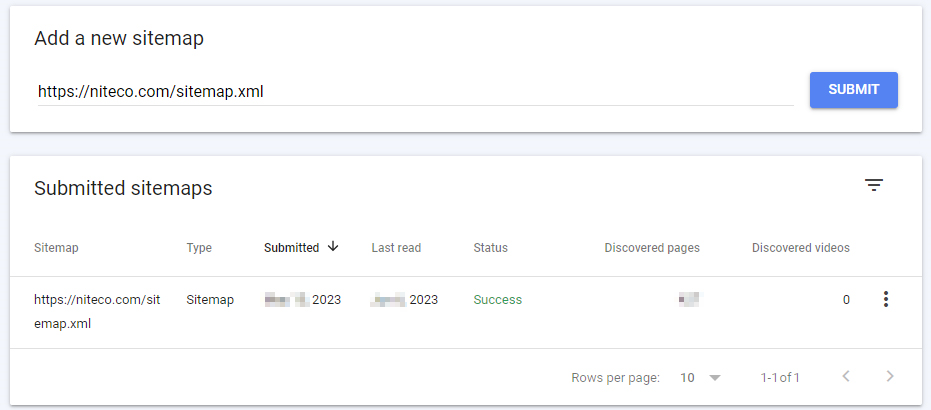Migrating a website is often a necessary step in a digital marketing strategy or during a major revamp, especially when your current platform or CMS no longer meets your needs, prompting you to migrate your website to another platform. This is because website migration requires a combination of resources from digital marketing (including SEO and analytics) and web development teams. And without a well-organized site migration SEO plan, the migration process can have a negative impact on your website and its search rankings.
Table of contents:
Why do you need to consider SEO in a website migration?
Site migration SEO checklist for the preparation stage
Step 2: Identify important URLs
Step 3: Benchmark important data
Step 4: Map URLs to avoid 404 errors
Site migration SEO checklist for the implementation stage
Step 1: Migrate sites during non-peak hours
Step 2: Implement redirects following the URL mapping
Step 3: Generate and submit a new sitemap
Step 4: Configure Google Search Console properly
Step 6: Update backlinks and old URLs with the new ones
Monitor your site after migration
So, what is SEO migration? It is a process that ensures a smooth transfer of search engine rankings, domain authority, and indexing signals when undergoing significant changes in your website or URL structure. SEO migration also guarantees that your search engine visibility, including rankings and traffic, is not lost during a website migration.

What is website migration?
Website migration or site migration refers to a process of making major changes to the website including URL, design, content, and structure. Very basically, it describes the process of moving your site and/or its contents from one place to another, usually involving changes to at least part of the URLs. It has to be planned and executed carefully, with a clear site migration SEO checklist, to avoid losing traffic, search engine rankings, and, as a result, even revenue.
There are several common reasons to migrate websites. If your business is rebranding, you may need to migrate your website to a new URL to match the new brand identity. When the interface of your website is no longer friendly to users, a revamp of your site’s structure might be needed.
Website migration usually involves several steps. The most important one is figuring out the reasons for the site migration and then making a detailed plan. Creating content and design plans is also crucial and must be considered when migrating a website. Referring to Niteco’s pillars of content migration at the beginning can help to save time and avoid confusion.
Why do you need to consider SEO in a website migration?
Migrating a website without considering SEO can have significant negative consequences.
1. Temporary loss of traffic
Site migration almost always results in a temporary loss of traffic. It's not abnormal to see a small decline in your organic traffic in the short run. This is because anytime you change the domain, content, design, or other significant features of a website, Google needs time to recognize the change and then update its index. To minimize traffic fluctuation and to make it easier for Google to crawl and index your website correctly, you need an SEO plan.
2. Drop in search rankings
If you choose the wrong kind of redirect when migrating to a different URL or do not redirect to the new URL correctly, your search rankings may be negatively impacted.
There are 2 major types of redirects to send visitors from one URL to another – 301 and 302 redirects. A 301 redirect is usually used when a page has been permanently moved to a new location, whereas a 302 redirect is commonly used when the page has been temporarily moved. If you do not choose the right kind of redirect, the search engine might treat your content incorrectly. As a result, your website could disappear from search results for months or even years, which could have a huge effect on the website’s traffic and conversion rates.
3. Hard for Google to crawl
If the website's sitemap is not updated throughout the migration process, it is much more complicated for Google to crawl. As a result, not all the website's pages would be indexed, which could seriously harm search engine rankings.
These are just three of many possible negative consequences of migrating a website without having an SEO strategy. Therefore, to avoid unexpected results, creating a well-tailored website migration plan is a crucial component of maintaining your positions in search results.
As an example, read how Niteco managed to bring more traffic and conversions for 15 Electrolux websites with our SEO services.
Site migration SEO checklist for the preparation stage

Step 1: Set up a staging site
A staging site is a duplicated version of your new website that’s not accessible to the general public. It allows you to test new changes without affecting the actual website. It is an opportunity to not only preview your website but also to test it before going live.
Besides, any changes applied to the new website can result in downtime, which can disturb website visitors. A staging site enables you to make changes without affecting the live site, minimizing the risk of downtime.
Remember that you should block staging sites from being crawled by search engines like Google using robots.txt. By doing that, your staging site remains private and only accessible to authorized users.
Step 2: Crawl your site and identify important URLs to avoid losing them
A site crawl is an essential step that allows you to scan your website and identify URLs. This helps you to go through with the website migration process without losing any URLs. Make sure you have a complete list of URLs from your old website before migrating your site. Then, you can map old URLs to new ones in your 301 redirect mapping.
You can also take this opportunity to identify any crawl errors or incorrect redirects that were present on your old website or your staging site.
Step 3: Benchmark any important data from Google Analytics, Google Search Console, or any other tracking tool
Benchmarking important data plays an important role in the site migration, especially when you want to track if any traffic is lost due to the site migration process. It gives you a baseline for the website’s performance. By comparing data from your old site with the new site, you can find out precisely how much traffic you lose and which pages lose traffic.
Benchmarking data also helps you to optimize the new website. This is because it provides valuable insights from both the old and new websites. By analyzing user behavior on the new site and old site, you can improve your content or design and make any other changes when migrating the site.
Step 4: Map old URLs with new URLs to avoid 404 errors
As mentioned above, a clear list of old URLs and new URLs is essential when making a well-tailored web migration plan.

Old URLs should be mapped with the new URLs in an Excel file or a database so that you can keep a record of the mapping process and refer to it if any issues arise during or after the migration. This list is then used to make sure all old URLs are properly redirected to the new URLs. Without these redirects, visitors and search engines will encounter a 404 error page when trying to access the old URL, resulting in major negative impacts on your search rankings.
Be extra careful when revamping page structure or creating new pages. If old content is incorrectly mapped to the new pages or pages are combined, this could result in duplicate content. It can confuse Google and other search engines and seriously harm your website’s rankings.
Site migration SEO checklist for the implementation stage

Step 1: Migrate sites during non-peak hours
For several reasons, it’s recommended that you migrate sites during non-peak hours.
Firstly, the migration process often involves temporary downtime or slow loading times. In order not to disturb visitors or even lose revenue, it is vital to avoid doing the migration at times when website traffic is high.
Secondly, website migration is a complicated process, which means errors or other issues might arise. By migrating during non-peak hours, website owners can reduce the risk of errors and ensure that the migration process goes smoothly.
Step 2: Implement redirects following the URL mapping
The next step is to implement redirects following the mapping of URLs. This ensures that the old URLs are correctly redirected to the new ones and your users will not encounter any 404 errors. If you are an SEO specialist or a digital marketer, make sure that you have discussed this with the web development team before migrating.
Step 3: Generate and submit a new sitemap
This step is to allow Google and other search engines to crawl and index the new website properly. It is important to act promptly and submit the new sitemap as soon as the website goes live, as Google quickly detects changes.

Use a sitemap generator tool to create a new sitemap for the migrated website or have your development partner create one. The sitemap should include all the new URLs and any redirects from the old URLs to the new ones. Then, submit the new sitemap to all relevant search engines. This helps search engines discover the new URLs and index them in their search results.
Step 4: Make sure to configure Google Search Console properly (GSC)
To ensure a smooth website migration, it is essential to properly set up a new property in Google Search Console for the new domain. This involves verifying that the property is set up for the correct version, accounting for any differences in HTTP vs. HTTPS and www vs. non-www. Remember to check in the Google Search Console settings if your website ownership is still valid after the move.
Additionally, website owners should submit both the old and new sitemaps to notify Google that the old site has been redirected to the new one.
Step 5: Update internal links
When migrating a website, it is important to ensure that internal links on the new site are pointing to the correct locations on the new site rather than the old one. Adjust new internal links to ensure your website visitors don’t encounter any unavailable internal links.
During the staging phase of website migration, it is also important to ensure that internal links are automatically updated in case of a domain change.
Step 6: Update backlinks and old URLs on other channels with the new ones
Another important step to minimize the risk of losing traffic is reaching out to update backlinks. Make sure to contact the owners or managers of websites that link to your own and make sure their links to your site are updated. You should also review and update the URLs for all backlinks you shared or inserted on other channels such as social media and email. If the backlinks continue to point to the old URLs, users may experience broken links or be directed to outdated or irrelevant content, which can negatively impact user experience and cause traffic loss.
Monitor your site after migration
Keep a close eye on search and referral traffic. It is recommended to check traffic daily for at least a week after the migration to ensure everything is under control and to identify any issues that may arise. Here are some key areas to pay attention to after migration:
- Crawl the website again to identify any new issues and fix them, especially 3xx and 4xx statuses.
- Check if tracking tools are properly set up. This includes verifying that Google Analytics, Google Tag Manager, and Google Search Console are collecting data correctly and that the tracking code is installed on all pages of the new website. Remember to use annotation to mark the migration date in Google Analytics. Annotations provide context to the data and make it easier to identify any changes in website performance that may be related to the migration. By marking the migration date in Google Analytics using annotations, web owners can accurately track website performance before and after the migration and identify any issues that may arise.
- Check the performance of your new site to make sure that the website is loading quickly and that there are no major performance issues. Niteco hosts its own performance monitoring tool that can help you keep up to date with every aspect of your site’s performance. Contact us to find out more.
- Keep control of the old site to make certain that any traffic or links pointing to the old website are redirected to the new website properly.
In Conclusion
Website migration can be a daunting process, but it doesn't have to be a nightmare for your website's SEO. By following this ultimate site migration SEO checklist, you can ensure a smooth transition to the new website while maintaining or improving your search engine rankings.
For more information, check out our checklist for launching a new Commerce site.
Contact Niteco to find out how we can help you with your website migration and all other SEO needs.



